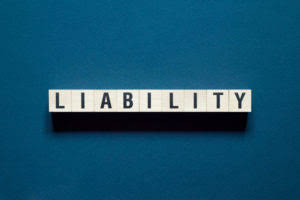
A healthcare organization adopts a new AI-powered auditing tool to assess insurance claims. Initially, misconfigurations lead to false positives, overwhelming the audit team. With proper training and incremental deployment, the tool eventually identifies discrepancies with pinpoint accuracy. Different industries come with unique challenges, and the audit risk model adapts seamlessly to meet those needs. With investors scrutinizing every detail, even a minor error in financial projections can snowball into a significant issue.

#2 – Control Risks
For example, control risk is high when the client does not perform bank reconciliation regularly. In this case, auditors will not perform the test of controls on the bank reconciliation. Likewise, more substantive works will be required in order to reduce audit risk to an acceptable level. This formula https://www.bookstime.com/ shows that the overall level of audit risk is a product of the individual risk components. Therefore, the auditor must assess each component and determine an appropriate level of audit procedures to reduce the risk to an acceptable level.
What Drives Inherent Risk?
The probability that the financial statements may include material misstatements is audit risk. Before running the formula, auditors will need to study the client’s business, including its daily operations and financial reporting procedures. They’ll also need to look at external factors like government policy and market audit risk model formula conditions, as well as financial performance and management strategies.

Case 2: Misguided Reliance on Analytical Procedures
- The true power of the audit risk model isn’t in its equations but in how it helps businesses overcome challenges and thrive in the real world.
- After the risk assessment, the control risk score reaches 60% due to gaps in the execution and governance of controls.
- Detection risk is the risk that the auditor fails to detect the material misstatement in the financial statements and then issued an incorrect opinion to the audited financial statements.
- For example, the merchandising company’s financial reporting might be easier to audit than financial reporting in agriculture or oil.
- A high detection risk score means that errors are more likely to be found during an audit, so the auditor suggests less rigorous control testing.
- An audit risk model is a conceptual tool applied by auditors to evaluate and manage the various risks arising from performing an audit engagement.
- Hence, auditors’ professional judgment which is based on their knowledge and experience is very important here.
This brings us to the question of how the above risks are actually quantified so that a business or auditor can calculate the overall audit risk. For example, meeting compliance standards like HIPAA or GDPR may have higher inherent risks due to their strict requirements and complex measures. A higher inherent risk indicates a greater chance of failing to meet compliance obligations.
- This dedication to risk assessment and management underscores the pivotal role of internal controls and strategic planning in achieving financial statement precision and reliability.
- They’ll also need to look at external factors like government policy and market conditions, as well as financial performance and management strategies.
- A $5 million fraud incident came to light when regulators flagged irregularities in the provider’s claims process.
- Let’s dive deep into its fascinating world and discover why it’s a cornerstone of financial auditing.
- Striking the right balance between thorough risk assessment and cost efficiency can feel like walking a tightrope.
- Again, you’ll want to document your understanding of your client’s internal control, including the control environment.
The final stage of the paper includes preparation of control mechanisms allowing for minimisation or elimination of the discovered risks. Eight major factors of risk comparisons are presented, and the conventional reduction of the risk concept to a unidimensional format is challenged. The similarities between risk issues and other issues of the social decision process are stressed. It is concluded that risk decisions are part of the general political process, and cannot be isolated from this. Expert assessments should be presented in a way that reflects the complexity of the subject matter, instead of repressing it.


For instance, the adoption of new accounting standards could necessitate updated audit techniques, leading to a reassessment of control mechanisms. Additionally, sophisticated data analytics play a pivotal role in modern audit risk assessments, allowing auditors to detect patterns normal balance or anomalies that manual evaluations might miss. This integration of technology into auditing procedures can significantly reduce detection risks, making audits more reliable and comprehensive. Audit Risk Assessment, per ISA 315, involves identifying and evaluating risks of material misstatement in financial statements.